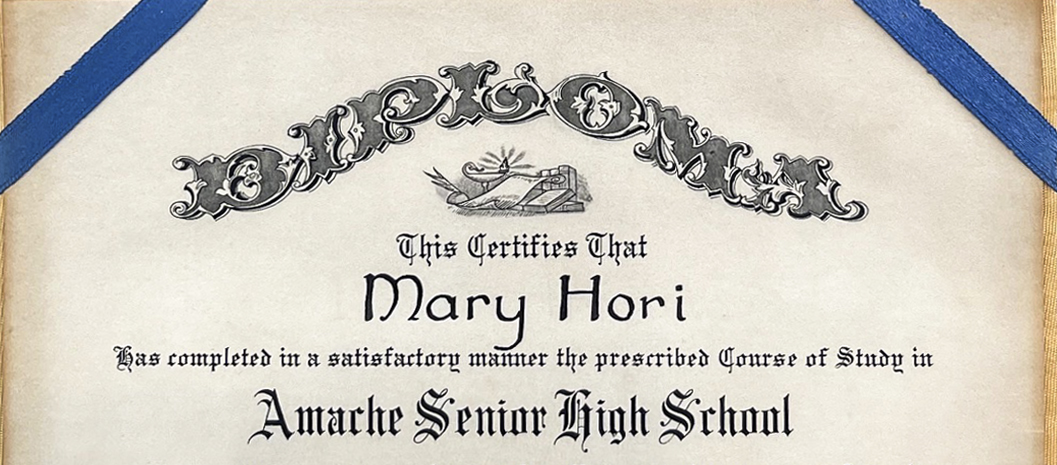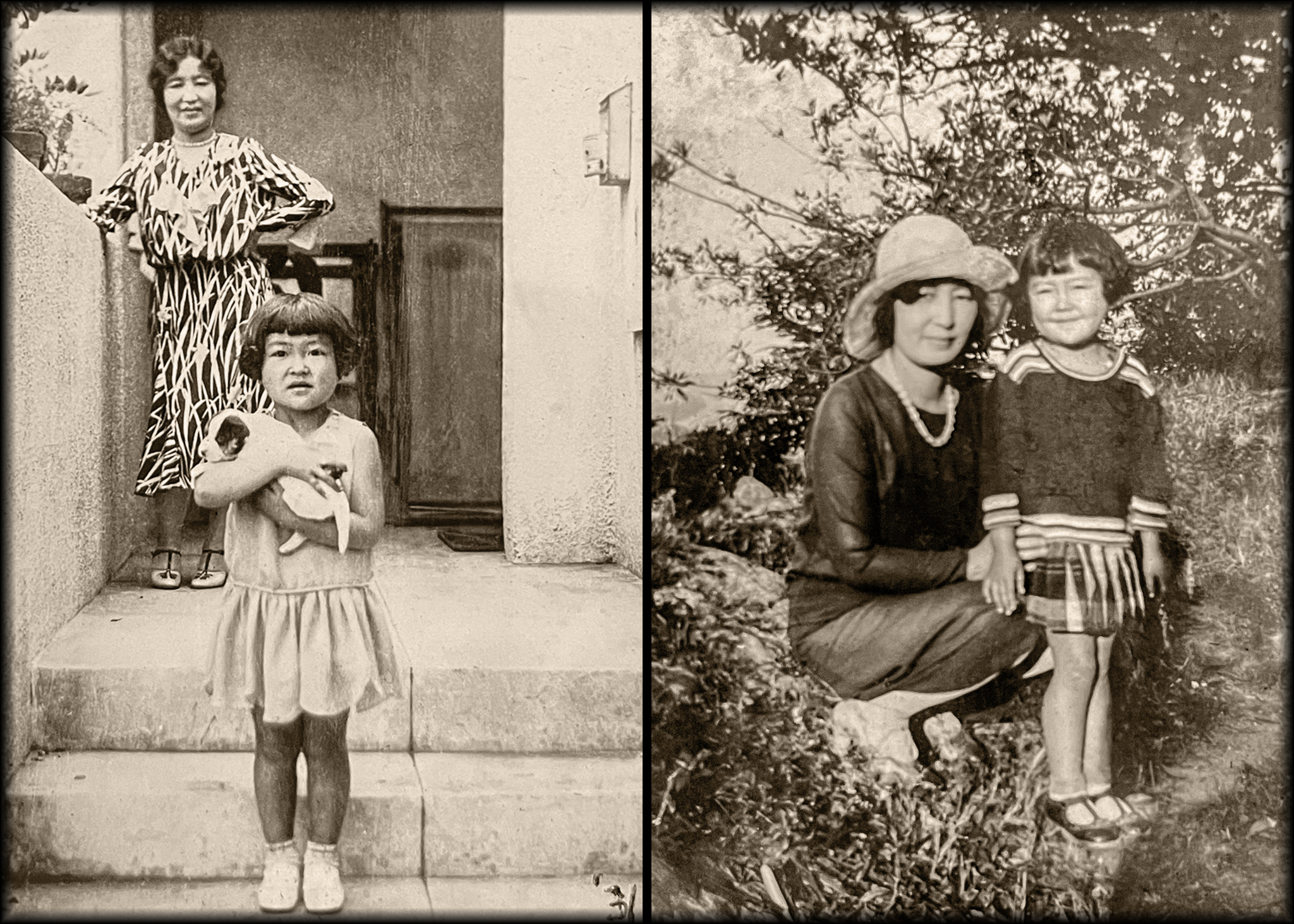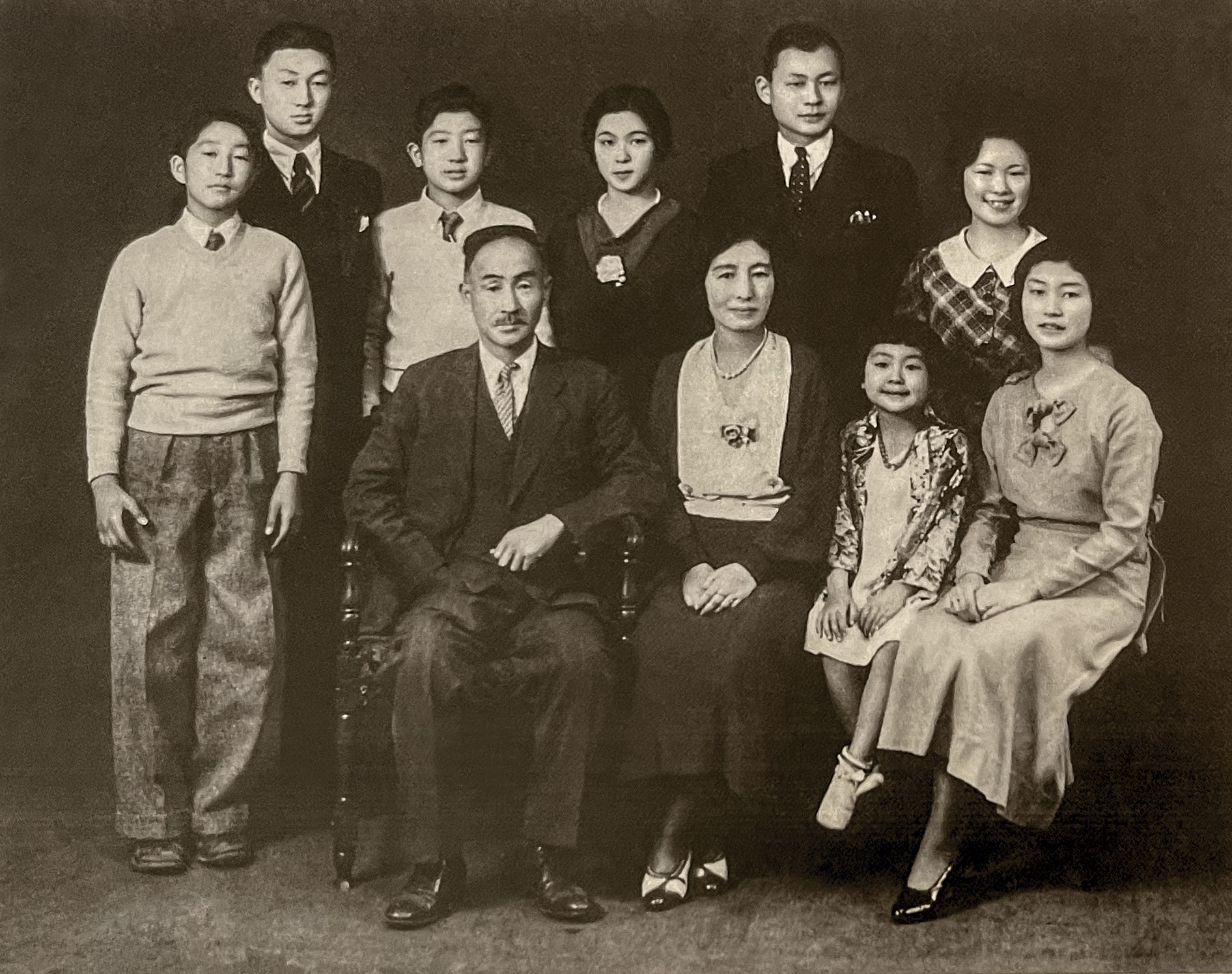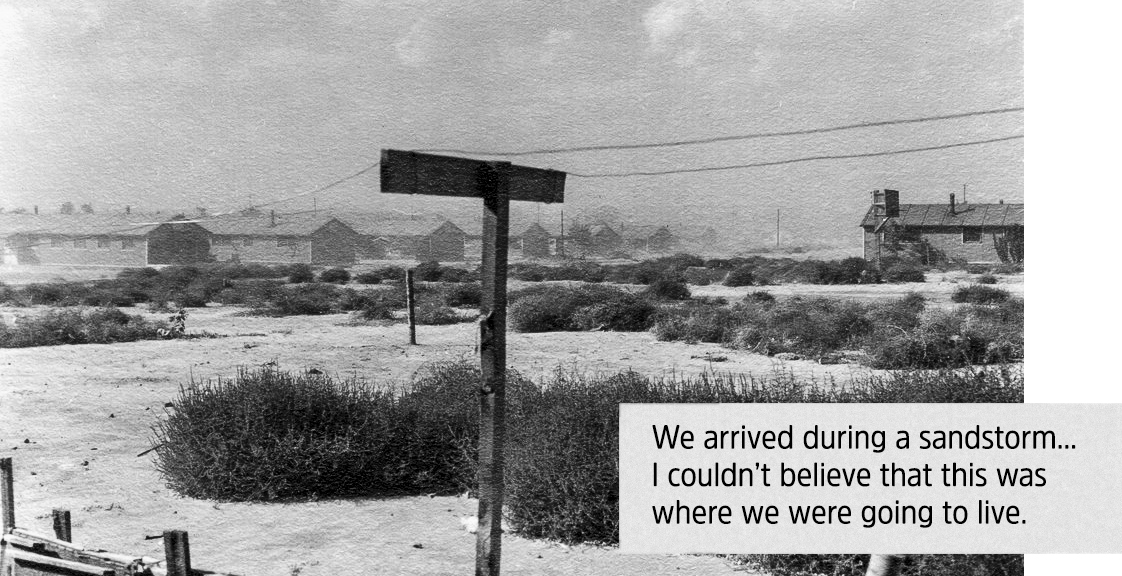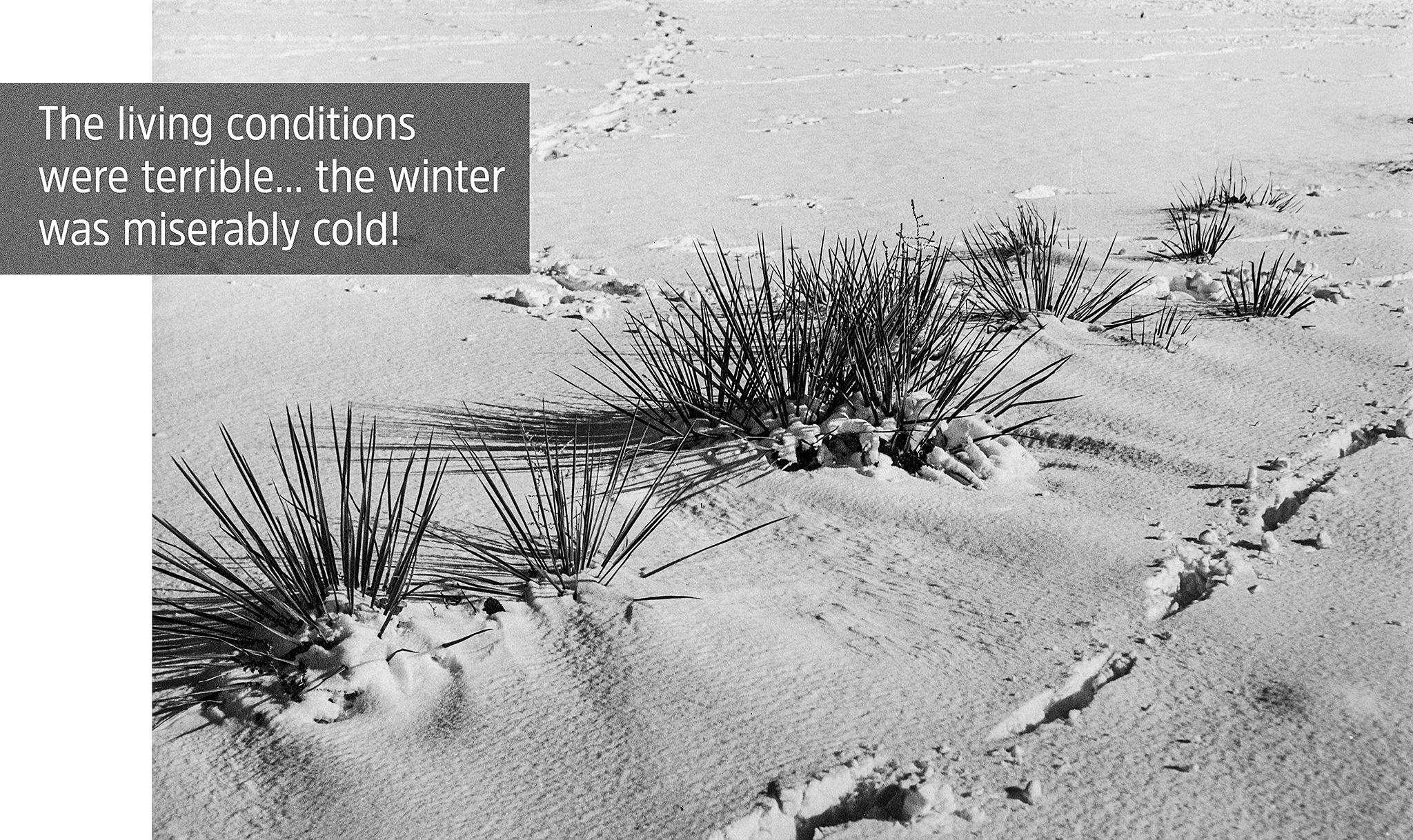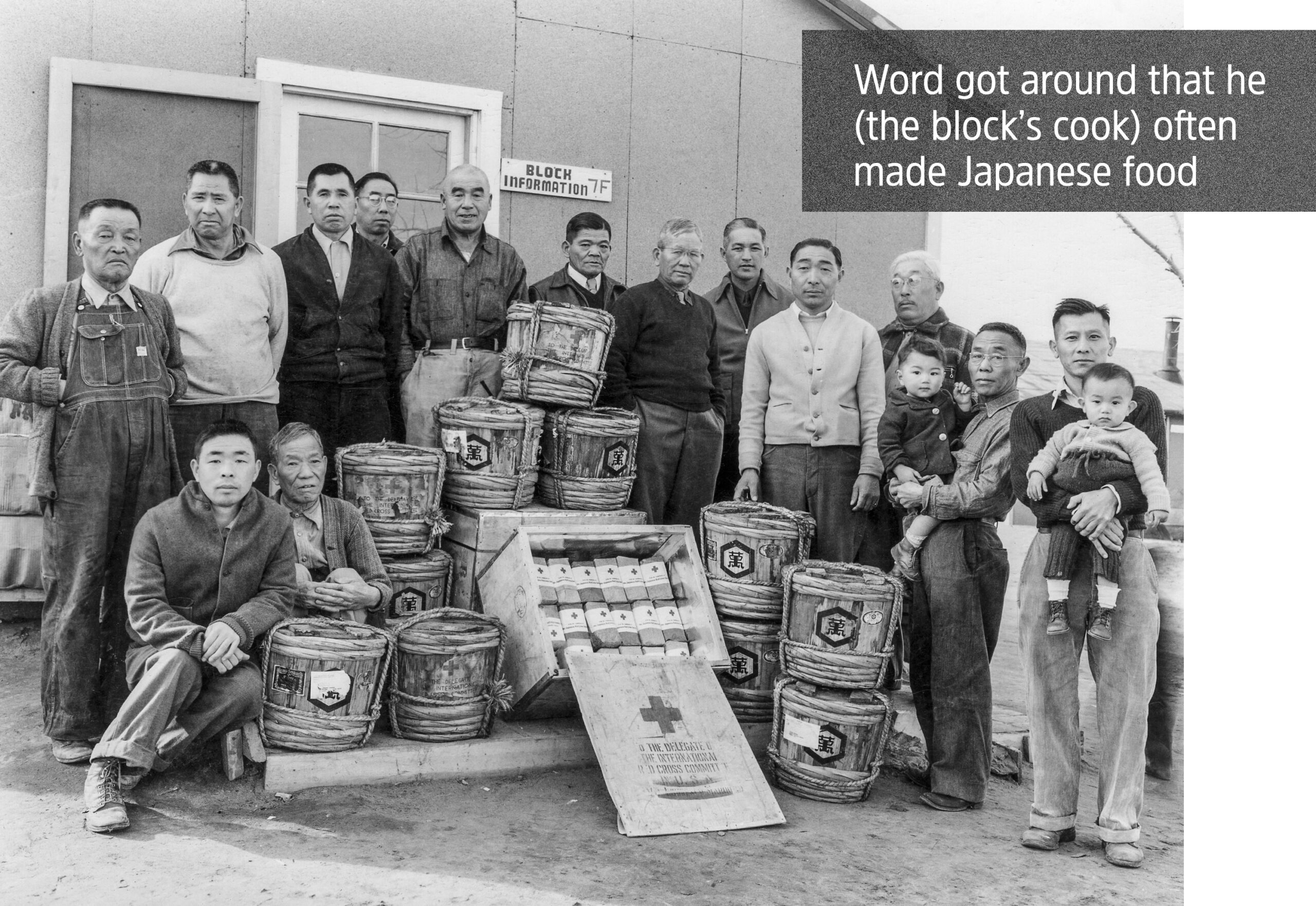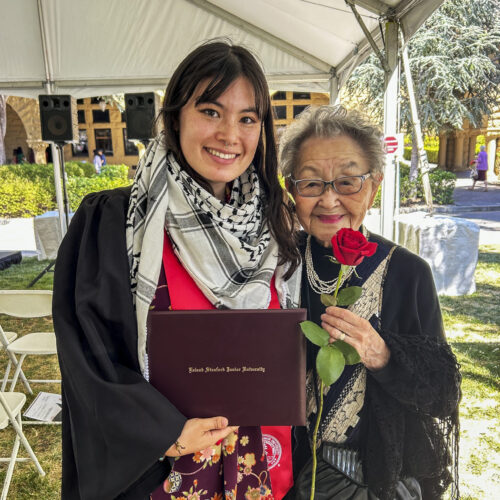Mary Hori Hidekawa celebrated her 99th birthday in June. She continues to make “okazu” home-cooked meals, dip dye cloth in indigo and spend time with family. She laughs out loud about the telegram that Hank, her boyfriend, sent her with a proposal. They married in 1950 and raised four daughters in San Francisco’s western avenues.

Mary isn’t a saver much less a hoarder. But she has kept one item from the prison camp years. In fact, it’s the only thing that remains: her high school diploma. “It represented a new beginning,” she says.
She opens a royal blue folder and pulls out a mimeographed program with the names of 31 classmates who graduated with her in Amache concentration camp’s first high school commencement. The barrack school was in eastern Colorado, 1,200 miles from her hometown of Los Angeles. The diploma conferred an air of respectability on a loosely-organized school only months old.
Mary graduated in 1943. She was one of 474 Nisei students who graduated while incarcerated during the three years that the camp existed. Mary remembers what she missed: a cap and gown, a yearbook, a prom.
After receiving FBI clearance to leave, she packed the diploma in her suitcase and got on a bus on which she was the only passenger. Recently, her daughter, Suzanne Hidekawa, and Nancy Ukai of the 50 Objects project sat down with Mary over the course of several afternoons to talk about a past that has been difficult for Mary to discuss until now, she says.
The conversations took place in 2024, when Amache officially became a unit of the National Park Service.
What do you remember about growing up in LA in the 1930s? You were born at home in Sawtelle, with the assistance of a midwife, and were the youngest of eight children.
My family lived on 37th Street in the Westside district of Los Angeles. I loved our diverse neighborhood — the Japanese, African American and Latino families, who were all very close, like family. I was especially close to the Loggins family, a Black family that lived down the street. The parents were caterers for the movie industry, and they also had two boys, one my age and one a little older than me. They often brought me along to catering events on movie sets which was really exciting. I was also close with the Venegas family and our next door neighbor Mrs. Coleman. Then there was the Komai family, who owned and published the Rafu Shimpo Japanese newspaper. They lived in the middle of the block in a huge house and had a very big family who all worked at the Rafu Shimpo.
Some of the high school kids on my block attended Manual Arts High School in the West Side District. We would walk 1-1/2 miles to and from school together everyday. Back then, they had two graduations a year, one in the winter, and one in the spring. I was 16, and was really looking forward to graduating that next winter. But on February 19, 1942, we heard on the radio that Japanese nationals as well as U.S.-born citizens of Japanese descent were going to be sent to concentration camps! It immediately sent us all into a state of panic. What were we going to do? Where were we going to live? I was really scared.
In March, the government imposed a five-mile travel restriction on U.S.-born citizens of Japanese descent and a curfew from 8 p.m. – 6 a.m. In April, we learned that there would be a posting on the bulletin board at the local church which would list every neighborhood and the time and day you would be picked up and taken to the Santa Anita Assembly Center.
Our neighborhood was one of the first to go, so we didn’t have much time, only about two to three weeks to figure out what we were going to do with all our belongings and our homes. It was all completely overwhelming. I immediately stopped going to school, all the Japanese kids did too, and we got busy packing all of our things to put in storage. I was only 16, both my parents had passed, so my older brothers and sisters had the burden of figuring out what to do with everything.
Our next door neighbor, Mrs. Coleman, generously offered to take care of our three homes for us. (Note: Aijiro, Mary’s father, was a successful businessman and bought property in Los Angeles. Even after the Depression, the family owned three homes. They lived in one and rented out the other two to Japanese American tenants.) What a blessing she was! It was the beginning of May and the day we were scheduled to leave, she hosted a huge pancake breakfast for all the Japanese families who were leaving for Santa Anita Assembly Center and invited the entire neighborhood to say goodbye to us. It was one of the saddest days of my life. There were a lot of tears. After breakfast, we loaded all our bags and suitcases in our car and drove to Santa Anita Assembly Center. As soon as we unloaded everything, our car was immediately confiscated.
We were assigned to barracks that had just been built, a very small room with a bed for each of us. I roomed with my older sister Riu, her husband and their two babies. I think I was in shock when we got there but soon after arriving, it finally hit me and I became very sad about what was happening to us. We stayed at Santa Anita from May to September until our camp, Amache, was ready to take us.
The day finally came to go to Amache. We boarded the train that took us through the Rockies, up and down the mountains for five excruciating days. My older sister Riu had two babies. I felt especially bad for families with babies having to care, feed, and change diapers for five straight days being confined to just a tiny space. My eldest sister Aik had two toddlers which was also very difficult for her. The train finally stopped in the town of Granada, and we loaded on buses which took us to Amache. We arrived during a sandstorm, and I couldn’t believe this is where we were going to live—there was barbed wire all around the camp, it was desolate, and all I could see was sand for miles and miles.
The barracks were set up where families lived in the middle rooms, and the outer rooms were singles and doubles. My sisters with children were assigned to a barrack together, and I was assigned to another barrack in a double room with my brother Moc. The barracks seemed sturdier than the barracks at Santa Anita, but I was horrified that we had to use a communal latrine with no privacy whatsoever. As time passed, people got very innovative and made curtains in the latrine with fabric that they brought and strung them on pieces of wood that they found lying around. Thank goodness the Japanese were always very creative and resourceful!
When we first arrived, everyone had such a difficult time adjusting. The living conditions were terrible, there were sandstorms and windstorms, and the winter was miserably cold! And while I never saw the Issei complain, I could see they were suffering the most. They would all sit together in the mess hall, but everyday I saw the sadness and worry in their eyes. They had worked so hard coming to the U.S. from Japan, and to have that all taken away was devastating for them. This new way of life was such a difficult adjustment for them. It took about six months, and finally I think everyone was starting to feel a little more settled but definitely not happy.
After a while, they finally started serving us rice occasionally at dinner. I will never forget seeing the Issei eagerly first in line with their bowls because they LOVED their ochazuke! The head cook in our dining hall was Japanese, a restaurateur before camp, so our meals were some of the best at Amache. His young cooks also worked with the farmers, so we often had fresh vegetables with our meals. Word got around how tasty our food was and that he often made Japanese food. While you weren’t supposed to go to another block’s mess hall, everyone came to ours. He was very creative and could make any food that he was given taste amazing. He made Japanese-inspired food as much as he could which was the closest we could come to being connected to our Japanese culture.
Washing clothes was another task we were not used to. Our family had a washing machine back at home, but at camp, we washed everything by hand and then hung them to dry in our barracks. It was such a hardship for families with young children and babies who had to continually wash clothes all the time. I don’t know how they did it.
Mr. Kusumi, an Issei, was always sitting in front of his barrack carving pieces of wood he collected around camp. Everyone had a name plate on their barrack, but I remember Mr. Kusumi’s was the most beautiful one of all. He was a true artist, and now having so much time, he carved many pieces of beautiful art which he hung in his barrack and I’m sure it helped him cope with the sterile atmosphere of camp.
I rarely spent time in my barrack, none of the older teens and young adults really did. I was about to graduate high school when we left for camp, so I just had to finish up one semester to complete my studies. On February 24, 1943, I was in the first graduating class at Amache. Our graduation was in the community hall, the principal gave a speech, and then the 32 of us got in line and received our diplomas one at a time. It was simple and quick, no celebration or party after which was really disappointing.
Soon after graduation, I got a job in the hospital doing office work, deliveries, and whatever other jobs they gave me. The hospital was far from my barrack, so I changed jobs and started working at the Adult Education School. This was closer to my barrack so it was a lot easier to get to work. When work was over, I hung out with my friends. Most of the older teens formed social clubs in camp based on the area they had come from. Friends from my LA neighborhood formed a club that we named “The Duchesses”. We were all 16-17 year olds and there were about 10-12 of us in the club.
The clubs organized all kinds of events with other clubs, like sponsoring dance nights, social gatherings, and sporting events. For the dance nights, we all used the money we earned from working which was a whooping $16.00 a month, to purchase simple decorations and food from the Co-op Store in camp. We would advertise the event on the camp bulletin board and also deliver individual invitations to other clubs. I was so impressed at how good we were at organizing! There was an event every week so we could keep ourselves busy and not think about the terrible living situation we were in.

The government said that if we had a sponsor or went to college, we could leave camp. I had friends who had decided to apply to college and subsequently got accepted. While I was excited for them, it was also very sad saying goodbye when they left. During this time, some of my other friends were able to leave with their families, so I regularly had to say goodbye to many of my good friends which was really sad for me. I didn’t consider college for myself because I wasn’t sure how I would pay for it, so I felt I just had to make it on my own.
After being in camp for about two years, my brother-in-law’s sister who lived in Chicago said she would sponsor me, so my family asked if I wanted to go and live in Chicago. I wasn’t really doing much at camp, and felt it was time for me to move on so I decided to leave. Unfortunately, my older sisters and their families didn’t have sponsors, so they ended up staying longer in camp after I left.
The day I was scheduled to leave Amache I was the only one leaving, so they had a bus come and get me and take me to the train station. I was finally able to leave after two years. I was just 18, completely alone, had to leave my family, had no money, no job and was going to live in a place I have never been before, but somehow I was able to find strength in looking ahead and starting something new. I look back at that time and realized how that experience forced me to grow up so fast. Several of the friends I made in camp were my forever friends, and I stayed in touch with them for our entire lives until they passed.
After arriving at the train station, I left for Denver, which was my first stop to visit my older brother Kats who was living there at the time. After a few days in Denver, I took a train to Chicago and met my brother-in-law’s sister who graciously took me in to live with her. I immediately got in contact with people I knew from camp that had also moved to Chicago, and I was so happy to find out that my friend Misako Kawaguchi from camp was living there, too.
We became best friends, and did everything together. We decided that we needed to start working but neither of us had any training, so we enrolled in a community business school for one semester. They placed us at the Baby Ruth candy factory which was so stressful and we worked so hard having to fill the daily impossible quotas on the assembly lines. They eventually moved us to packaging, but that was equally as stressful so we decided to leave that job.
During this time, my sister Riu’s husband got a job in Chicago and was able to sponsor his family to be released from camp and join him in Chicago. We were incredibly lucky that our neighbor in Los Angeles had taken care of our family home for us the entire time we were in camp which enabled us all to move back to Los Angeles back into our family home. Unfortunately, all of our belongings including all of our family’s Japanese items had been taken by people who stayed in the homes while we were gone, but it was home nonetheless.
Coming from Chicago, we didn’t experience much racism, but it was very scary to be in Los Angeles now. There were anti-Japanese signs in all of our local grocery store windows! You wouldn’t dare go anywhere near them. We had to travel extremely far just to get groceries and were always very careful where we shopped as our lives depended on it.
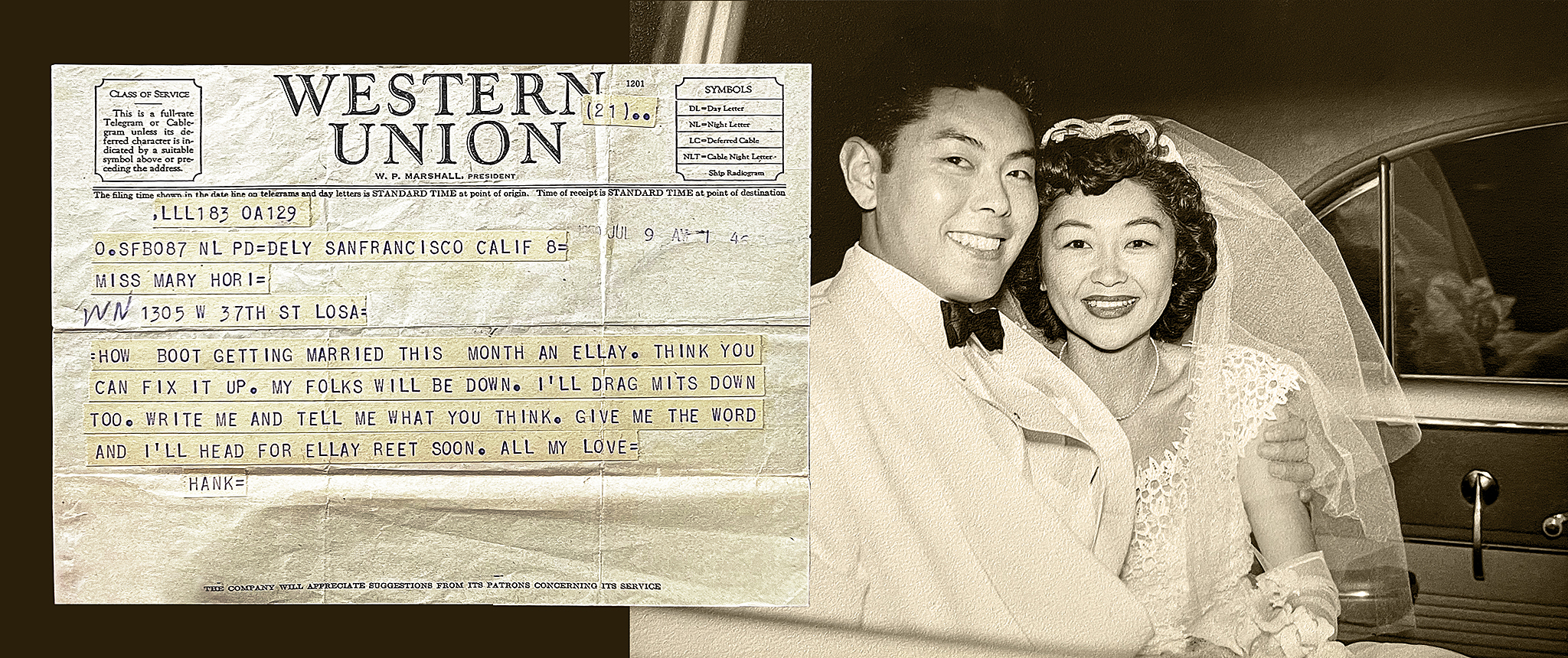
It was 1951 in Los Angeles, I had gotten married and had a baby daughter. My father-in-law had fallen ill so we made the decision to move to San Francisco to care for him. I had a big extended family in Los Angeles, so it was really difficult leaving. This is where I experienced the worst racism of my life. We tried to find an apartment in San Francisco, and called at least 30 rental listings, but as soon as we showed up to each rental property, they took one look at us and said it had just been rented. We finally gave up, and ended up living with my parents-in-law and their two adult daughters. Seven of us in a tiny apartment!
We lived on McAllister Street in San Francisco and my three daughters all attended Morning Star School. During this time my friend Sachi Miyoshi worked at the corner drugstore owned by a Japanese couple and they asked me if I would work in the greeting card section on Saturdays. I knew they needed help so I worked there for about a year. After I left that job, another friend of mine, Toki Wada, who worked at a Japanese-owned cleaners on California Street, asked if I would be interested in working there because they also needed help. Since it was really far from our house, and I had to take two buses plus walk a few blocks, I only worked there for about 6 months.
Finally, after 10 years, saving every penny we could, my husband and I bought a home in the Sunset district in San Francisco, which is the house I still live in today.
What does healing mean to you?

Mary: I don’t really know what healing means. After camp I never thought about it, and even tried to forget about it. I definitely didn’t feel comfortable talking about it, maybe because it would make all those sad memories come to the surface and burying them was easier. In 2022, for the first time, I started attending JA events with my family. I went to the opening of the Tanforan Memorial where my husband and his family were held in the Tanforan Assembly Center before going to Topaz, the 2023 San Francisco DOR where I lit a candle in honor of the Nisei, and then the most memorable for me was the Wakasa Memorial Service in San Francisco Japantown where I made and presented a paper flower as an Amache survivor. I had never heard the story of James Wakasa and to see him be honored in such a beautiful way was so impactful for me.
It felt so good to me to see the JA community honor formerly incarcerated people that it helped me to start to open up about my own experience at age 98! It felt so good to tell my stories and realize that there was a lot of trauma that everyone experienced in camp. It felt like such a relief to let it all out after keeping it inside for so many years. Maybe this is actually what healing feels like. All of my JA friends from camp have all passed, but recently, my daughter has introduced me to so many JAs that have welcomed me into their circle. They are all SO NICE!
How does it feel to have a new JA community?
Mary: It feels like a new beginning.

| Mary's Amache Diploma | |
|---|---|
| photo, right | Mary with grandchild Casey Kaneyo Hidekawa at Casey's university commencement, 2024. |
| dimensions of Mary's diploma | 5 1/2 inches x 7 1/2 inches |
| material | paper and blue cotton cover, gold lettering, cotton ribbon |
| date | Feb. 24, 1943 |
| migration | Amache camp, CO; Denver, CO; Chicago; Los Angeles; San Francisco |
| current location | Hidekawa family collection, California |
Credits
Oct. 1, 2024
by Nancy Ukai
David Izu: art direction and digital illustrations
Cover Images: Studio portrait of Mary Hori Hidekawa by Tōyō Miyatake, early 1950’s, diploma photos and contemporary photo of Mary by Nancy Ukai, 2023, Santa Anita Assembly Center by Clem Albers 4/6/1942 courtesy of the National Archives and Records Administration and the Saul Collection, Sand Storm at the Amache concentration camp by George Ochikubo, 1942-1945, courtesy of the George Ochikubo Collection, contemporary landscape of Amache, “Withering,” by Sherri Mabe, 1/27/2019
Acknowledgements
Mary Hidekasa, Suzanne Hidekawa and the Hidekawa family, Bif Brigman, the Coleman and Downs family, Mitch Homma, Amache Alliance, Sherrie Mabe, George Ochikubo Collection, Densho
Supported by The National Park Service
Japanese American Confinement Sites grant program
Disclaimer of liability
The material contained on this website is for information purposes only. Using this information as a basis for business or investment purposes is done at one’s own risk.
© 2024 50 Objects/Stories
